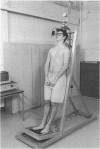Abstract
Spinal loading during weightlifting results in a loss of stature which has been attributed to a decrease in height of the intervertebral discs--so-called 'spinal shrinkage'. Belts are often used during the lifting of heavy weights, purportedly to support, stabilize and thereby attenuate the load on the spine. The purpose of this study was to examine the effects of a standard weightlifting belt in attenuating spinal shrinkage. Eight male subjects with a mean age of 24.8 years performed two sequences of circuit weight-training, one without a belt and on a separate occasion with a belt. The circuit training regimen consisted of six common weight-training exercises. These were performed in three sets of ten with a change of exercise after each set of ten repetitions. A stadiometer sensitive to within 0.01 mm was used to record alterations in stature. Measurements of stature were taken before and after completion of the circuit. The absolute visual analogue scale (AVAS) was used to measure the discomfort and pain intensity resulting from each of the two conditions. The circuit weight-training caused stature losses of 3.59mm without the belt and 2.87 mm with the belt (P greater than 0.05). The subjects complained of significantly less discomfort when the belt was worn (P less than 0.05). The degree of shrinkage was significantly correlated (r = 0.752, P less than 0.05) with perceived discomfort but only when the belt was not worn. These results suggest the potential benefits of wearing a weightlifting belt and support the hypothesis that the belt can help in stabilizing the trunk.
Full text
PDF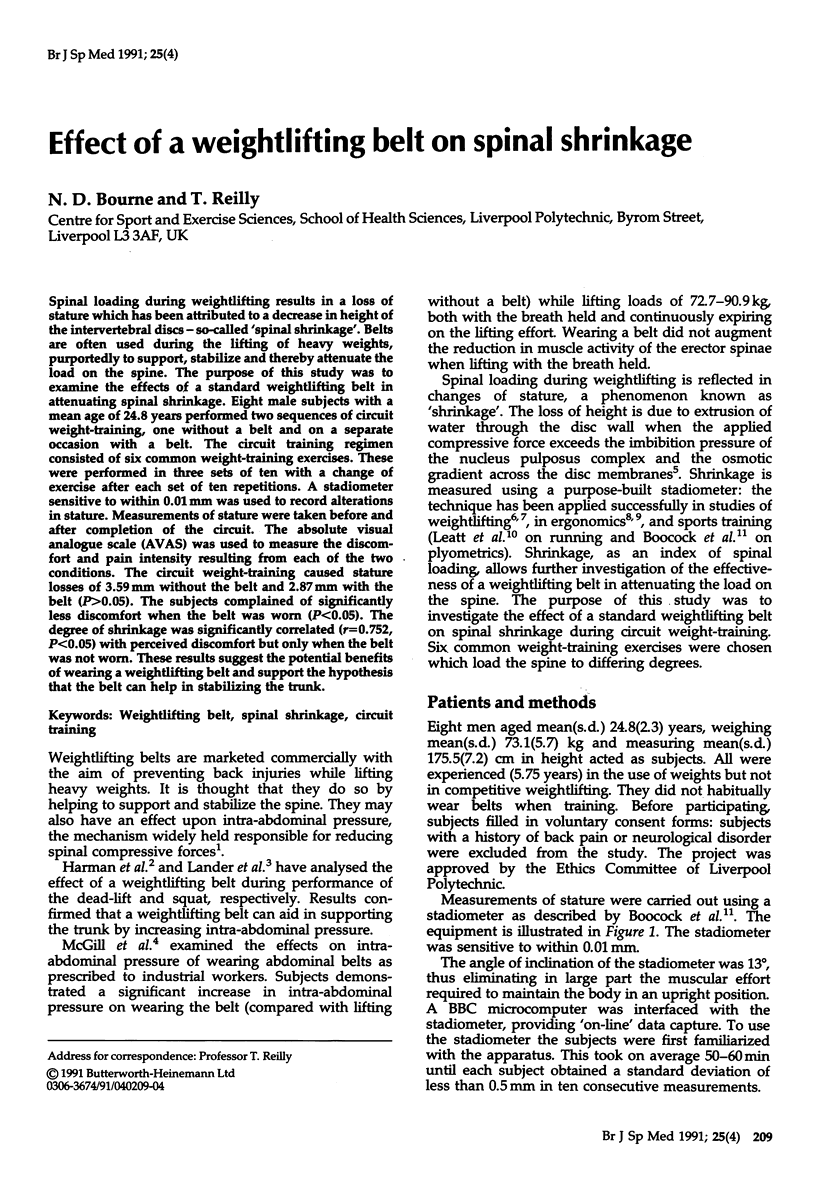
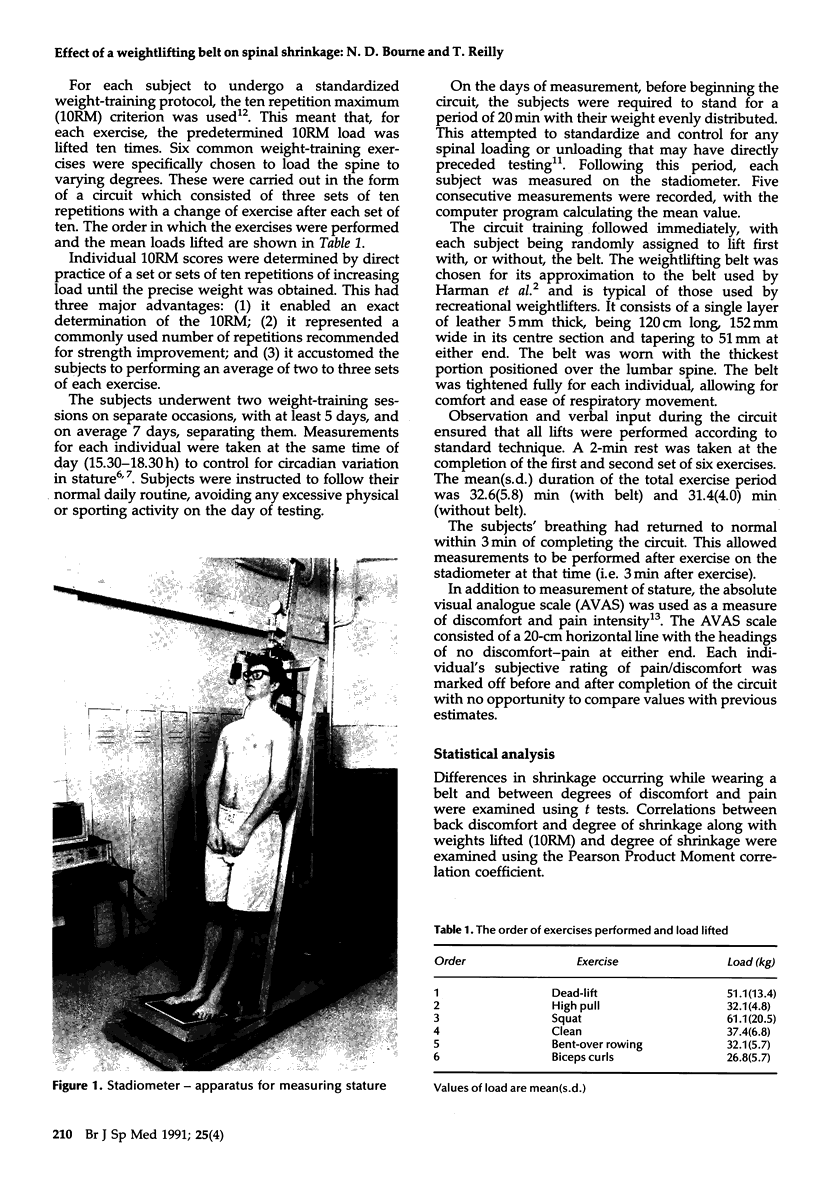
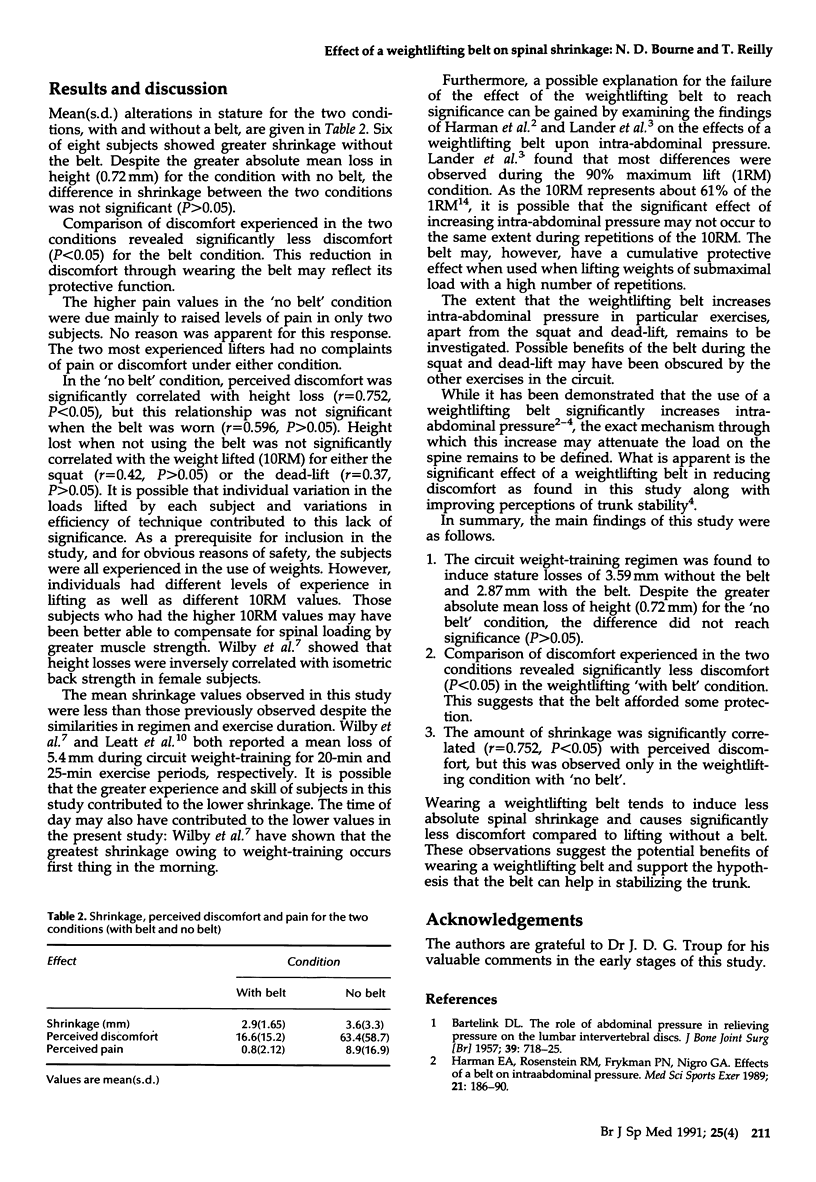
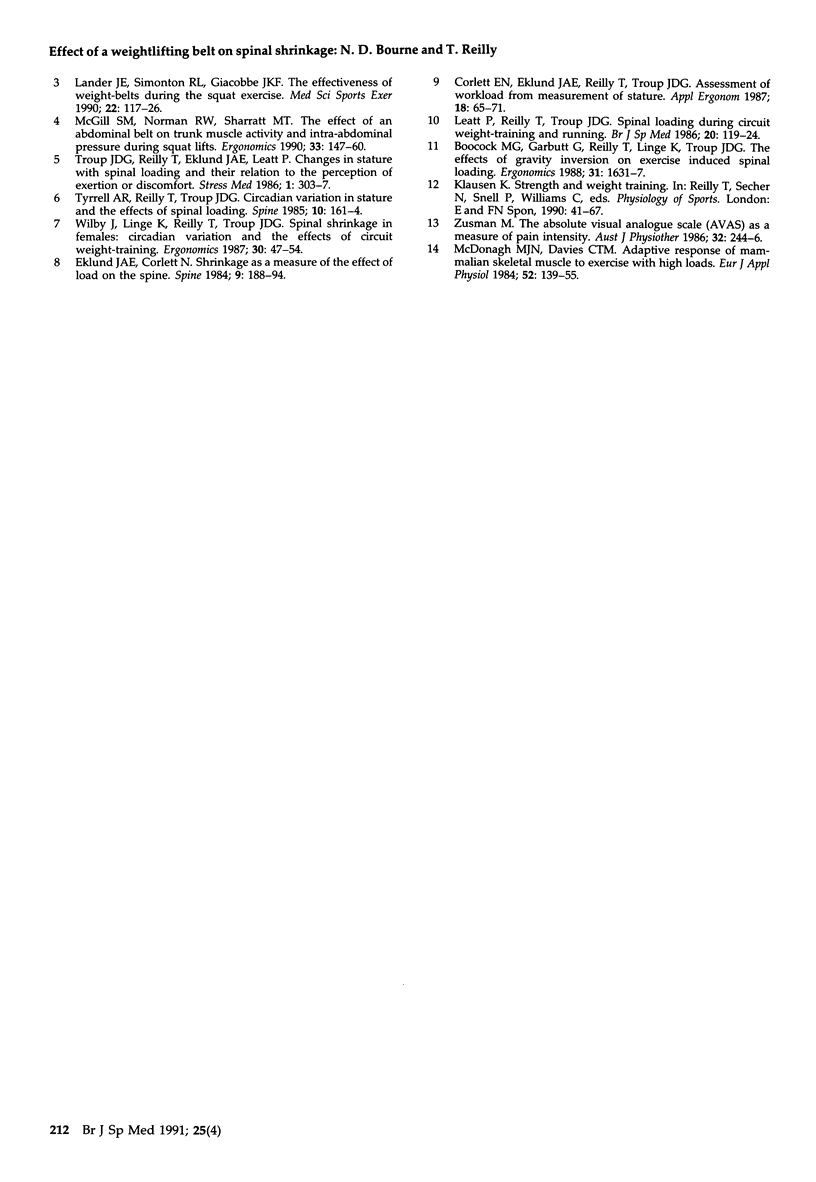
Images in this article
Selected References
These references are in PubMed. This may not be the complete list of references from this article.
- BARTELINK D. L. The role of abdominal pressure in relieving the pressure on the lumbar intervertebral discs. J Bone Joint Surg Br. 1957 Nov;39-B(4):718–725. doi: 10.1302/0301-620X.39B4.718. [DOI] [PubMed] [Google Scholar]
- Boocock M. G., Garbutt G., Reilly T., Linge K., Troup J. D. The effects of gravity inversion on exercise-induced spinal loading. Ergonomics. 1988 Nov;31(11):1631–1637. doi: 10.1080/00140138808966812. [DOI] [PubMed] [Google Scholar]
- Corlett E. N., Eklund J. A., Reilly T., Troup J. D. Assessment of workload from measurements of stature. Appl Ergon. 1987 Mar;18(1):65–71. doi: 10.1016/0003-6870(87)90073-1. [DOI] [PubMed] [Google Scholar]
- Harman E. A., Rosenstein R. M., Frykman P. N., Nigro G. A. Effects of a belt on intra-abdominal pressure during weight lifting. Med Sci Sports Exerc. 1989 Apr;21(2):186–190. [PubMed] [Google Scholar]
- Lander J. E., Simonton R. L., Giacobbe J. K. The effectiveness of weight-belts during the squat exercise. Med Sci Sports Exerc. 1990 Feb;22(1):117–126. [PubMed] [Google Scholar]
- Leatt P., Reilly T., Troup J. G. Spinal loading during circuit weight-training and running. Br J Sports Med. 1986 Sep;20(3):119–124. doi: 10.1136/bjsm.20.3.119. [DOI] [PMC free article] [PubMed] [Google Scholar]
- McDonagh M. J., Davies C. T. Adaptive response of mammalian skeletal muscle to exercise with high loads. Eur J Appl Physiol Occup Physiol. 1984;52(2):139–155. doi: 10.1007/BF00433384. [DOI] [PubMed] [Google Scholar]
- McGill S. M., Norman R. W., Sharratt M. T. The effect of an abdominal belt on trunk muscle activity and intra-abdominal pressure during squat lifts. Ergonomics. 1990 Feb;33(2):147–160. doi: 10.1080/00140139008927106. [DOI] [PubMed] [Google Scholar]
- Tyrrell A. R., Reilly T., Troup J. D. Circadian variation in stature and the effects of spinal loading. Spine (Phila Pa 1976) 1985 Mar;10(2):161–164. doi: 10.1097/00007632-198503000-00011. [DOI] [PubMed] [Google Scholar]
- Wilby J., Linge K., Reilly T., Troup J. D. Spinal shrinkage in females: circadian variation and the effects of circuit weight-training. Ergonomics. 1987 Jan;30(1):47–54. doi: 10.1080/00140138708969676. [DOI] [PubMed] [Google Scholar]



